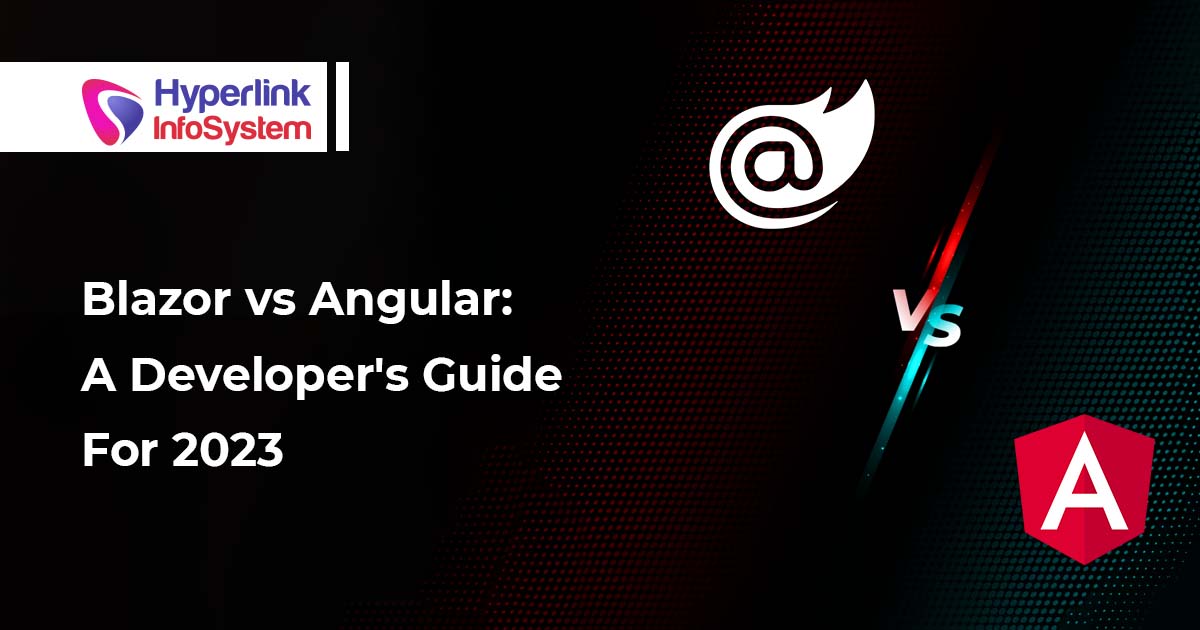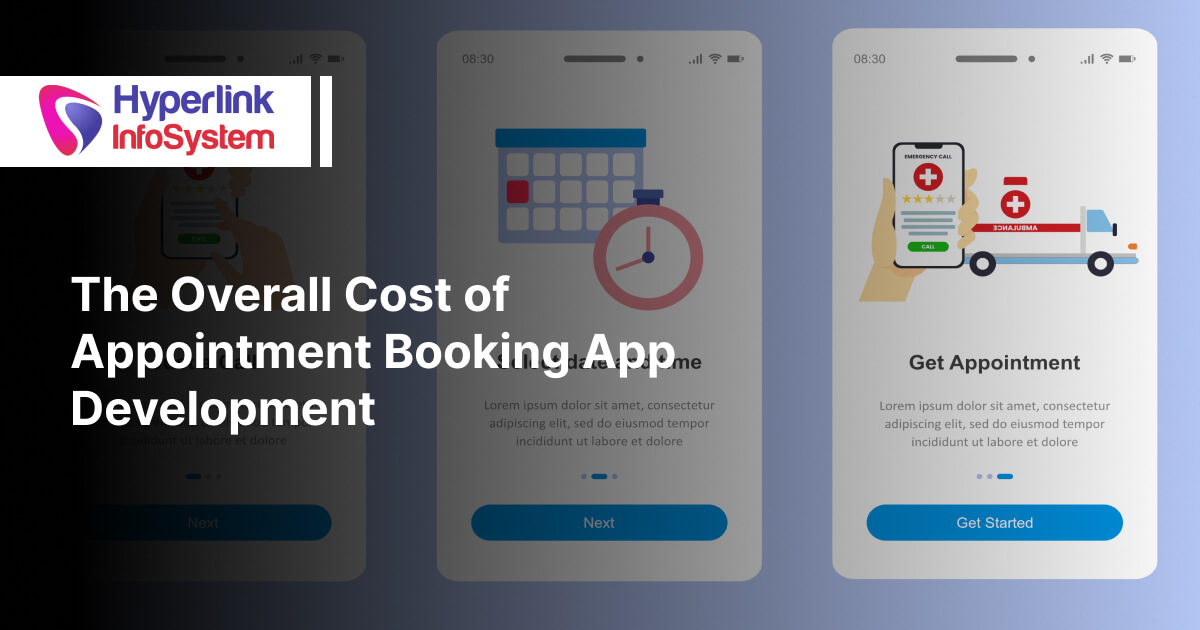JavaScript is the most widely used programming language, having started out as a language for web browsers and expanding to include all business and technological fields. More than 67% of developers use it, according to the 2019 Stack Overflow Report. The world of mobile app development has been evolving quickly, though, and it's possible that front-end and back-end developers won't need to use Javascript any longer to create sophisticated web applications.
To create scalable and dynamic online applications, one of the most popular client-side component-oriented frameworks is Angular. The various capabilities that both frameworks offer will be covered in this essay.
On the other side, Microsoft's brand-new ASP.Net Core-based web application framework, Blazor, is available. Any SPA-based web application, such as Angular, React, etc., can be developed with it. Additionally, the client system does not need to have any additional plugins installed in order to run the application.
We will contrast Angular with Blazor in this essay. We'll examine each framework's community strengths, PWA/SPA support, async nature, and architecture.
TABLE OF CONTENTS
- What is Blazor
- Pros of Blazor
- Future of Blazor
- What is Angular
- Pros of Angular
- Future of Angular
- Blazor vs Angular
- Conclusion
- FAQS
What is Blazor?
A well-known framework in the.Net technical community is Blazor. It was developed by Microsoft and blends a modern and conventional razor foundation. Frameworks for Net and WebAssembly. It is a single-page web app development framework that is open-source.
What else? Both client-side and server-side apps can be built with its assistance. Backend and frontend developers may create complex and aesthetically pleasing graphic user interfaces (UIs) for applications and websites using Blazor development. Blazor's unique ability to combine backend and frontend processes using a single language, which functions well in a browser and offline functionality, streamlines development.
A Blazor application is developed from web building blocks like HTML, CSS, and C# code. Utilizing an ASP.NET feature called Razor Components, Blazor applications are created. This framework enables developers to create reusable and engaging user interfaces for web-based applications.
Net architecture for client-side apps based on Web Assembly. In addition, sharing code and libraries between server-side and client-side applications aids developers. Because C# can be used to create both types of apps. Hire full-stack developers.
Pros of Blazor
Until Blazor came out, JavaScript was the gold standard for full-stack web apps. This means back-end developers had no option but to learn JavaScript if they wanted to ace full-stack development.
When using Balzor, you build a class library with the validation algorithm and include the library as a reference in both your client-side and server-side Balzor applications. The identical piece of code is deployed in this manner without having to create the class twice. Naturally, you reduce your effort and development time significantly.
The client-side Blazor framework makes it simple to create performance-demanding applications like augmented reality and video games. Additionally, Blazor is already pre-compiled into WebAssembly, enabling faster deployment and execution of server-side code than is possible with languages like JS. The deployment is completed and code execution speeds up as the full-stack cycle goes on. Just hire the best front-end developers.
Since the server-side Blazor does not repeatedly send data to the server, programs that run on Blazor don't use a lot of network traffic. Once users download the app from the internet, there is no effect on speed or performance and they can use it entirely without any web support.
Cons of Blazor
This is currently the most annoying feature of Blazor. Although we are aware that this is being planned, it would be wonderful to have this feature because it can seriously hinder production. It will be fantastic when hot reloading is offered by Blazor like it is in Angular (which is obviously more mature).
This is a new technology, and while it is very promising, it still has a long way to go before it can compete with more established front-end frameworks like AspNet MVC, Angular, React, etc. We haven't yet encountered any significant bugs. You can currently learn Blazor and debug it with modest resources, so don't worry too much if something goes wrong. There aren't presently a lot of resources available on Blazor. I've seen that a MEAP Blazor in Action is already in the works and will be published in the first half of 2022.
Also Read, Hire Dedicated Developers
Future of Blazor
.NET apps are now facing a significant barrier to entry into the web space. We wouldn't be overly pessimistic if we predicted Blazor's future to be prosperous. Full-stack developers can benefit from Blazor in this regard.
We anticipate it developing in this direction and challenging JavaScript head-on. As Blazor shows significant promise by positioning itself as a single UI framework. The Blazor team is working extra hard to iron out the programming quirks in order to address the size and speed difficulties. We can anticipate positive news shortly.
Due to the diversity of web creation, Blazor won't be the future of all web development. For server-side coding of websites, a variety of languages are utilized, including C#, JavaScript, and Python.
Web assembly's nature requires compilation from a source language like C# to the destination machine code. By default, this won't gain C# or Blazor any new ground. C# competes with TypeScript, a superset of JavaScript with types and another language offered by Microsoft.
What is Angular?
One of the most well-liked JavaScript frameworks is AngularJS. AngularJS was released as an open-source framework in 2010. It was created in 2009 as a part of a Google project by Miko Hevery and Adam Abrons. The software has been downloaded by users, who have started creating original applications for it. It has achieved great success. Developers were strongly encouraged to use AngularJS to build mobile apps by Ionic (previously DriftyCo), who built the Ionic Framework on top of Apache Cordova.
Utilizing HTML and TypeScript, enterprise Single-page Web Applications (or SPAs) are built using the contemporary MVVC framework and platform Angular. Using a collection of TypeScript libraries that you integrate into your projects, it implements both essential and optional functionality.
You must become familiar with Angular and the numerous parts that make up an Angular app because it is an opinionated framework that specifies a particular style and conventions that developers must follow and adhere to while creating apps with Angular.
Pros of Angular
One of the most important advantages is the Long-Term Support (LTS) that Google provides for Angular development. Google uses Angular as well and is very confident in its stability. Google's commitment to long-term support for Angular gives insight into the company's plans to keep using the framework and expand the Angular ecosystem.
You won't have to spend time building program flows and choosing which things should come first with its help. Just specify your goals, and Angular will take care of the rest. As HTML is used to create the user interface (UI) of an Angular application. HTML is a simpler language when compared to JavaScript. Along with being declarative and simple to use, it has directives like ng-app, ng-model, etc.
Using it when writing code or doing maintenance processes aids in the early detection and eradication of errors. The benefit of utilizing this method is that it enables the best possible code quality, increasing the application's security. Here you can hire Angularjs developers.
Although the Angular framework is integrated with the original MVC, the software architecture is more MVVM-based. Developers are not required by Angular to break an application up into various MVC components and create code to connect them.
Instead of using an MVC (Model-View-Controller) architecture, its framework prefers to employ an MVVM (Model-View-ViewModel) one. Two-way data binding between the View and ViewModel is supported by the MVVM model. It enables the view's state to automatically propagate changes made to the ViewModel. The observer model is typically used by ViewModel to guide changes to the ViewModel model.
It reduces the demand on the network, enhancing website user experience. An affordable way for websites to function like mobile apps is to create a Progressive Web App (PWA). Single-page web apps (SPAs) can be created by employing Angular's server-side rendering capabilities. Additionally, it helps the home page load more quickly and enhances the functionality of the website on mobile and low-powered devices.
In Angular, you don't require any additional getters or setters. Because every object used by Angular is a POJO, it is possible to manipulate them using all of JavaScript's standard features. The items can also be iterated over as necessary, with characteristics added or removed.
Also Read, How Much Does It Cost To Create An App Like Netflix?
Future of Angular
One of the most widely used JS frameworks right now is Angular. It has a sizable user base and an extremely vibrant community. Additionally, Google is funding the Angular development which lends it a great deal of credibility and support.
Companies are making the most of it to build high-performance applications. The framework contains a tonne of features that speed up and simplify development. You can hire Angular developers to create a website or app.
For developing enterprise applications, Angular is ideal. It offers the capabilities and performance to manage massive data sets and intricate procedures. It supports TypeScript, which is great for creating complex enterprise apps. Your project will be finished fast and expertly. Just the thing you should do is hire dedicated developers.
The NgModulars are the next item on the list. The Angular framework was intended to be modularized with this interesting feature. You can design more specialized, compact modules for your purposes. You can keep your code manageable and orderly by doing this. Lowering the amount of code that must be loaded into the browser, will also increase performance.
Making the development process more manageable is one of the key objectives of the Angular team. With tight typing, they intend to improve the developer's ergonomics. It will make sure that every piece of code is written in a uniform manner.
With great capabilities like type checking and error reporting, Angular already makes it simple for developers to build high-quality code. Future iterations of Angular will include these features that will be improved by the team.
The angular team intends to speed up the text processing and debugging procedures. They are developing a new function called stack traces that will make it simpler to identify and fix code mistakes. You can find the precise line of code that produced an error by looking at stack traces. You can use it to swiftly identify and correct any errors in your application.
Blazor vs Angular
Google developed and made available the Angular JavaScript framework in 2016. The framework aims to simplify the creation and testing of single-page applications (SPAs) by providing a framework for client-side MVC and MVVM in addition to strong internet application characteristics. As a result, the developer can produce eye-catching SPAs quickly.
Performance
Angular Material is a tool used by AngularJS developers to create exceptional solutions.
AngularJS is outperforming Blazor in a performance comparison. VS Code development support is available for Angular, but Blazor was only introduced. For Angular, there are many component libraries. Items that are supported include IDEs, data libraries, and UI elements. You can also install design frameworks like Bootstrap. Even though it will take some time for Blazor to catch up to Angular's state of development, Material Design is being advanced by Blazor.
Support for PWA
PWAs and Angular are compatible (progressive web apps). Blazor's PWA support is currently not very robust. PWA continues to enjoy positive public opinion. Scoped styles are supported by Angular, which is an interesting feature, but not by Blazor. Developers complain about downloading program sizes even as Blazor is developed and continues to be dependable.
Coding timing
It uses Visual Studio to get familiarity with devices and modules. Turnaround and troubleshooting periods can be rapid. Blazor is simpler to develop and troubleshoot than Angular. Additionally, Blazor features live reloading that is simple to set up. The construction of this feature takes time. Compared to Angular, Blazor performs significantly better when integrating CI/CD builds. Users are positioned on the back end of Blazor, as opposed to Angular, allowing you to create services and methods that may be used directly from higher levels. As a result, when comparing Blazor to Angular code, Blazor wins. For Angular, there are coding best practices.
Security
After authenticating their identification documents, the process of finding users and granting them access to the data they need is known as authorization. Angular forbids server-side authentication and authorization. We consider AngularJs to have a worse level of security in the Blazor vs. Angular security comparison since it is unable to implement any of these features.
Support for scoped styles
This means that a specific CSS style can be used in a relevant section of your program. Scoped styles are supported by Angular and a vast range of other website frameworks and tools. However, when customers are considering several options, Blazor lacks this distinguishing feature.
Conclusion:
This essay focused entirely on comparing Blazor and Angular 2023. The open-source frameworks Angular and Blazor are also solid choices. They aim to solve issues that front-end developers frequently encounter. It can be difficult for a developer to work on Blazor if they are proficient in front-end development because they must learn about the.
Connected to Blazor is internet technology. The same is true for a C# developer who is skilled in. They wish to use the Angular Framework for their projects instead of the Net framework. Although both frameworks have a learning curve, we must choose them for our projects based on particular scenarios when they are complementary.
Therefore, the choice between Angular and Blazor is entirely dependent upon your needs and goals.
 +1 309 791 4105
+1 309 791 4105





















































 +91 8000 161161
+91 8000 161161
